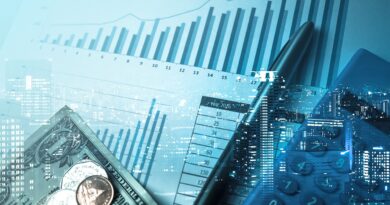ETFs, the list of the most expensive products of 2023
In the financial landscape of 2023, the choice of ETFs has become an increasingly sensitive issue for investors, particularly regarding the associated costs and expenses.
The emerging trend shows a marked preference for low-cost ETFs, with an increasing emphasis on expense efficiency.
Recent analysis by ETFBook has revealed that the majority of ETF investments, both in the equity and fixed income segments, are focusing on products with a low Total Expense Ratio (TER).
In particular, equity ETFs with a TER of less than 0.30% have attracted almost all investments in this category in the last twelve months.
Similarly, lower-cost fixed income ETFs have seen significant capital inflows.
read also fixed maturity bond ETFs, the best Attention now shifts to products that offer an optimal balance between costs and historical performance, with a particular emphasis on the medium-low ranges.
This trend is supported by an overall decrease in average expenses for equity and fixed income ETFs in recent years, a clear sign of the growing importance investors place on cost efficiency.
In this context, the recent moves of some large players in the sector, such as the commission cut made by State Street Global Advisors, have further catalyzed attention on the issue of expenses.
These initiatives have had a significant impact on capital inflows, demonstrating how cost sensitivity has become a key factor in ETF selection.
With a magnifying glass on management costs, in this article we will explore the products to avoid because they are too expensive.
read also The top performers of Canadian ETFs of 2023 The worst equity ETFs for TER in 2023 We analyze three different ETFs, focusing in particular on the Synthetic Expense Indicator (TER) and other key aspects that define each fund.
We look at three funds that stand out for their relatively high costs, which is crucial for expense-conscious investors.
These ETFs, while offering unique investment opportunities, have above-average Synthetic Expense Ratios (TERs), a factor to be carefully considered.
1.
, through an Unfunded swap, offers an innovative approach to index hedging, but at a high cost.
Launched in 2008, it has a significant market history, but its high annual volatility and lack of currency hedging require careful risk assessment by investors.
The fund's accumulation policy aims to reinvest income, contributing to capital growth over time.
read also The best ETFs on the European insurance sector 2.
L&G E Fund MSCI China A UCITS ETF Managed by Legal & General (LGIM), this ETF has a size of 13 million euros and a TER of 0.88% per annum.
It offers targeted exposure to the Chinese market through a physical replication strategy.
Although launched more recently, in 2014, its annual volatility, small size and lack of currency hedging make it a likely difficult option for investors to evaluate, even if they are looking for specific exposure to the Chinese market.
The fund's accumulation policy is an aspect that favors capital growth.
3.
HANetf EMQQ Emerging Markets Internet & Ecommerce With assets of 167 million euros and a TER of 0.86% per annum, this ETF is positioned as an expensive but potentially interesting option for accessing the emerging internet and e-commerce markets 'e-commerce.
Its physical replication strategy ensures accurate coverage of the benchmark index.
Launched in 2018, it displays the highest volatility among the three, indicating greater risk potential.
Like the others, it does not offer currency hedging and follows an accumulation policy, aspects that investors must weigh in relation to the higher costs.
Reflections not to be underestimated These funds, despite their higher costs, can still offer interesting opportunities and differentiated investment strategies.
However, the importance of careful and informed assessment cannot be emphasized enough.
Investors should carefully consider the relationship between the cost of an ETF and the potential return or diversification it can add to their portfolio.
The choice of an ETF should not be based solely on its TER, but on an overall assessment that considers investment objectives, risk tolerance and time horizon.
In a constantly evolving market, information and prudence remain the most precious allies for successfully navigating the world of investments.
read also Attention, this ETF has collapsed in the last 30 days Disclaimer The information and considerations contained in this article should not be used as the sole and main support on which to make investment decisions.
The reader maintains full freedom in his own investment choices and full responsibility in making them, since he alone knows his risk appetite and his time horizon.
The information contained in the article is provided for informational purposes only and its disclosure does not constitute and should not be considered an offer or solicitation for public savings.




